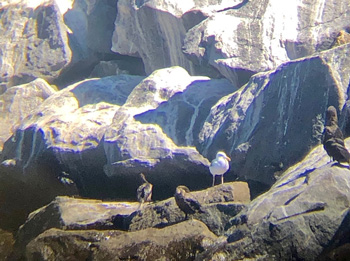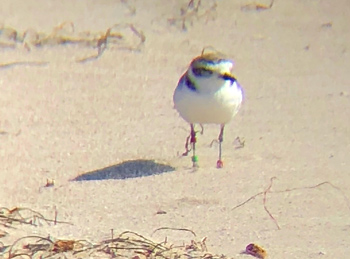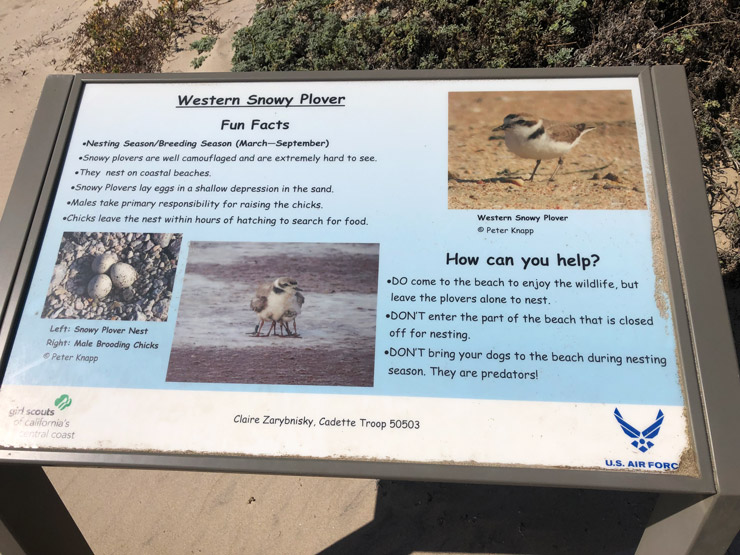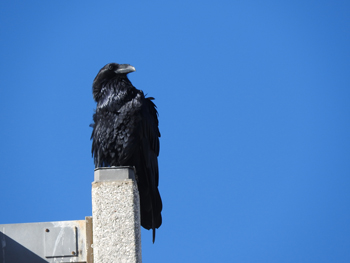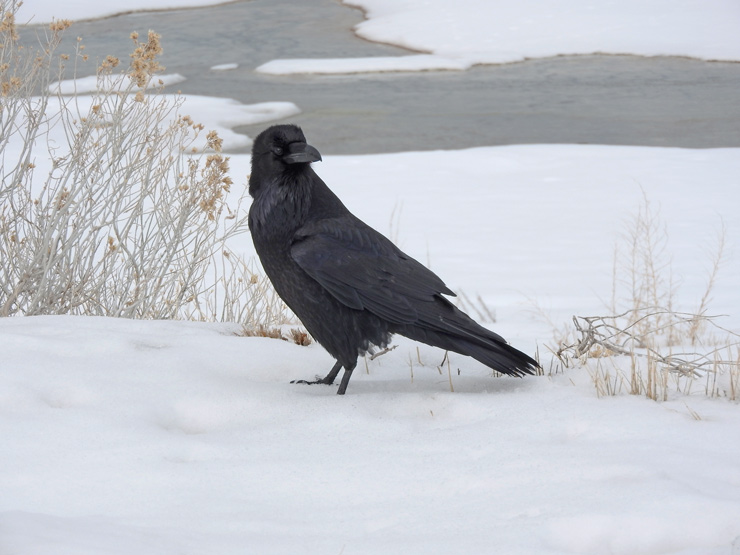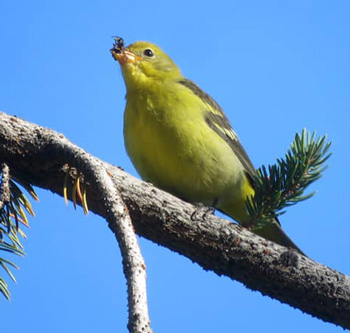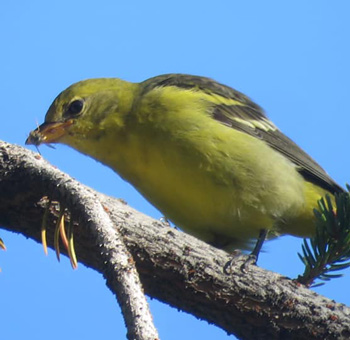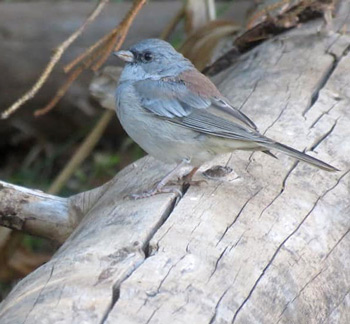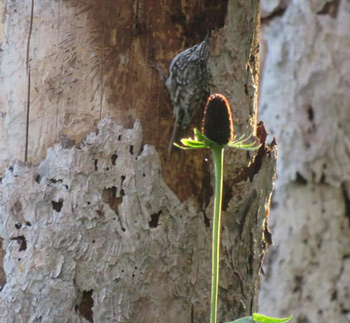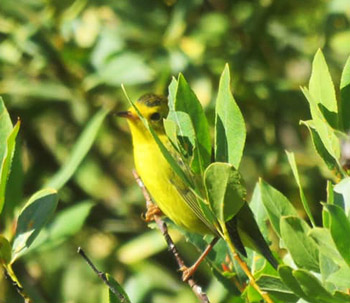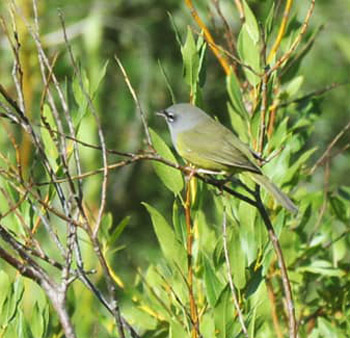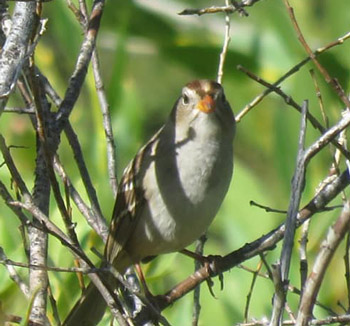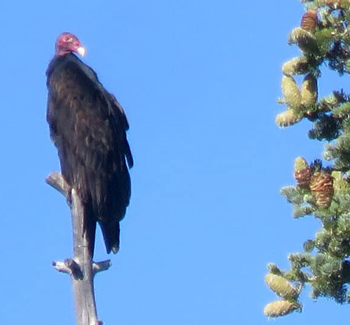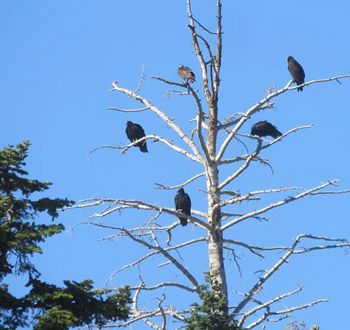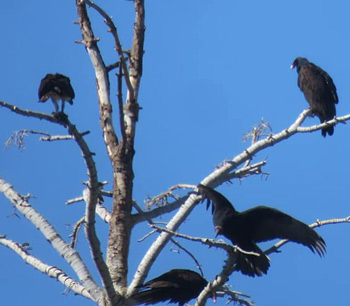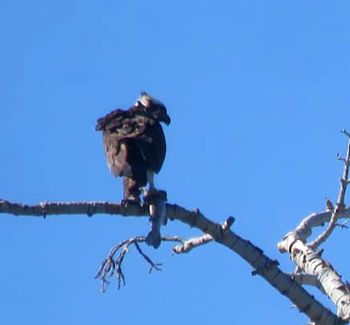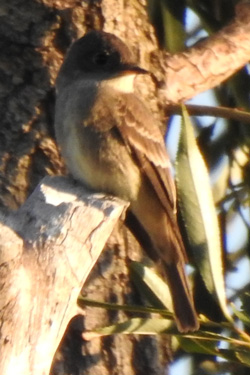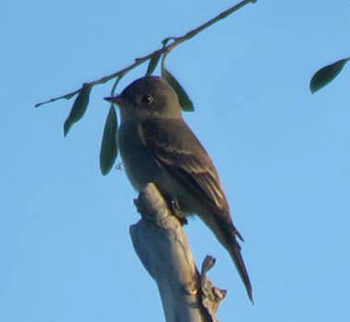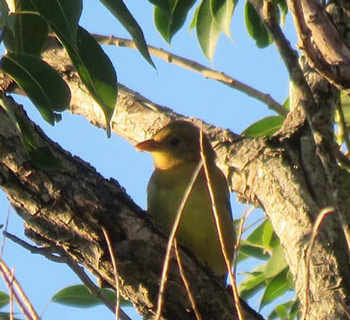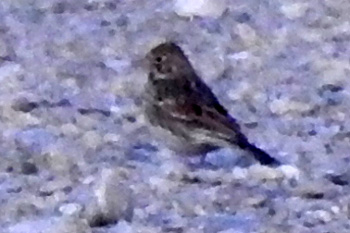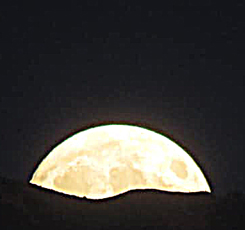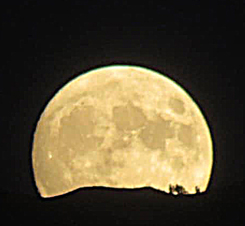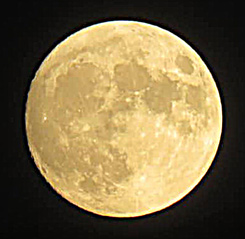|
|
|||||||||||||||||||||||||||||||||||||||||||||||||||||||||||||||||||||||||||||||||||||
Utah County Birders
Newsletter
|
|||||||||||||||||||||||||||||||||||||||||||||||||||||||||||||||||||||||||||||||||||||
 |
Contents
Monthly Meeting
Upcoming Field Trips
Captain's Log
Bird of the Month
Field Trip Reports
Printable Version
Thursday, Oct 10, 2019, 7 PM at the Monte L Bean
Museum in Provo, UT
Map to Museum
Woodpeckers of North
America. We’ve learned about owls, now we are going to learn
about woodpeckers! Come join us for an informative evening learning about the
different woodpecker species that occur in North America and the unique roles
they play in the bird world.
Saturday, Oct 12, 2019, All Day
The Big Sit!
We will start at 6am, on the Southwest corner of the Provo Airport Dike. Come join us for another year of UCB participation in the Big Sit, an international non competitive bird count sponsored by Bird Watcher’s Digest. We will have a count circle established on the Southwest corner of the Provo airport dike. The goal is to spot as many species from inside our count circle as possible. (Birds must be seen by a participant standing in the circle, but the bird does not have to be in the circle.) Everyone is welcome, stop by for a little or a long while and help us count birds! For more info on The Big Sit: https://www.birdwatchersdigest.com/bwdsite/connect/bigsit/about.phpSaturday, October 26th 7 am
North-eastern Reservoirs
Meet at 7am at Harmons on 8th North in Orem by the gas pumps.
Bring a lunch! We will go to East Canyon, Echo, and Rockport reservoirs!
|
Utah County Birders
Captain’s Log - October 2019 Text and Photos by Keeli Marvel |
|
| Hi
there birders! I'm excited to have something to report to you this month. I
spent a long weekend visiting a friend and her new baby at Vandenberg Air
Force Base in southcentral California a couple of weekends ago and picked up
another lifer. Birding wasn't obviously the primary purpose of the trip,
meeting the new little one and catching up with an old friend was, but the
baby was super chill and my friend such a great host I still ended up
getting in some great birding opportunities.
|
|
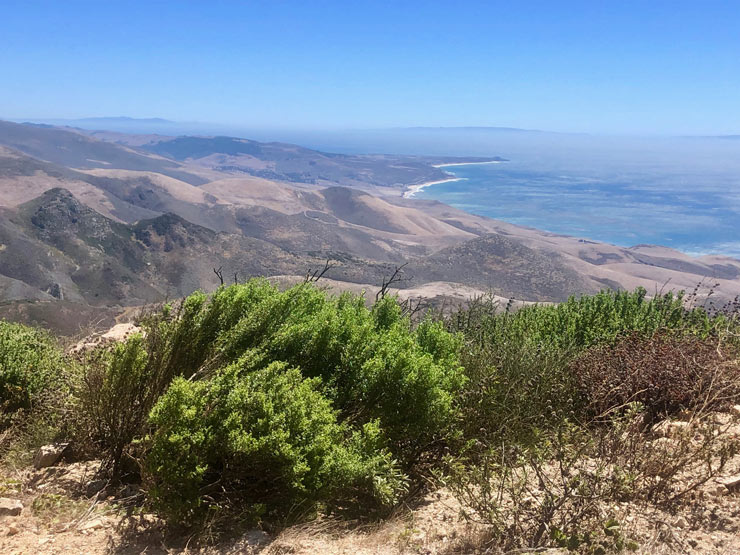 View of the coast with the Channel Is.way off in the distance |
|
|
|
|
|
|
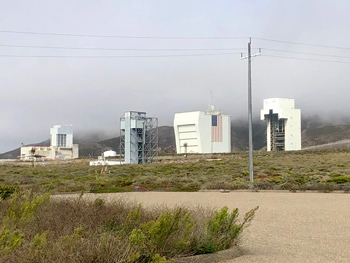 United Launch Authority rocket launch pads |
|
|
|
|
|
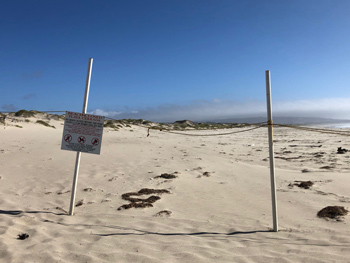 Closed beach for nesting season |
| That afternoon we rounded my trip off with a walk on Wall Beach on where I found SANDERLINGS and several SNOWY PLOVERS, including a banded one - one of the T&E-listed coastal population. The coastal population of Snowy Plover has experienced serious declines caused by the loss of nesting habitat due to coastal development, predation by cats, and other anthropogenic causes. Because of those declines, the coastal population (but not the ones in the interior of the US like the ones here in Utah) was listed on the Endangered Species list as Threatened which has allowed managing agencies and landowners to fund conservation measures to help the population recover. Vandenberg actually closes beaches during nesting season to help ensure that the birds have the space and safety they need to make it successfully through nesting season. This and other conservation actions are helping the Snowy Plover population make a comeback. |
|
|
|
|
|
As I mentioned before, the Nuttall's Woodpecker was bird #596 on my life list. Next up: I'm hoping for Black-backed and White-headed Woodpeckers on an upcoming trip to Yosemite and Reno. Not sure what bird #600 will be, but I'm hoping for something good, and I'll be sure to tell you all about it when I get there! Thanks for continuing on this Birding journey with me! Happy Birding! Keeli Marvel |
|
|
Common Raven
(Corvus corax)
by Kristin Telford Since this October is the 170th anniversary of Edgar Allen Poe’s death, I thought it was appropriate to talk about “The Raven.” Yes, in Edgar Allen Poe’s famous poem, this bird symbolizes death and loss, it’s true that a group of ravens is known as an “unkindness”, and in literature and movies, the raven is often depicted as a messenger of bad things to come. However, there is so much more to this creature than a spooky bird that fits in with Halloween. |
|||
|
In the poem, “The Raven,” the title character is heard to tap
on the narrator’s door or window. Ravens have strong thick bills so this would
be no problem for this bird to make a loud enough noise to wake the narrator
from a doze. Since ravens are both predators and
scavengers, they can use their bills for a variety of purposes. They use both
their bills and their intelligence to raid other birds’ nests with one raven
distracting the parent on the nest, luring it away, while another raven comes to
take the eggs. |
|
||
|
Ravens will use their bills for defense as well as offense
and can learn to use tools. When getting too close to their nest, some
researchers found ravens who pried rocks from the ground and flung them at the
researchers. Perhaps in Edgar Allen Poe’s poem, the raven used a stick or a rock
to tap at the door. When the narrator of the poem
opened the window, in came a raven to perch above his chamber door. Ravens are
the largest of the “perching birds” of the order Passeriformes and are of the
order Corvidae. Passerines are also known as “songbirds,” though I don’t think
much of the raven’s rough croaky “singing,” as compared to other passerines such
as the Western meadowlark. |
|||
|
|
|||
|
|
|||
|
|
|||
|
14 Sep 2019
Nebo Bench Field
Trip
|
|||
| 6:00 am came early and it was cold this morning! Five of us met at the Nebo Bench Trailhead a little before 8:00. It was still in the shade and a little nippy. We saw most of the regulars that come in for a bath and morning drink, such as the Mountain Chickadees, Ruby-crowned Kinglets, Dark-eyed Juncos, Red-breasted Nuthatches, Pine Siskin, Western Tanagers and White-crowned Sparrows. We also saw a Red-tailed Hawk, Brown Creeper, Cordilleran Flycatcher, Northern Flicker, Cassin's Finch and Common Ravens. We heard a Downy Woodpecker and a pack of hound dogs that had treed a bear down in the ravine...nope we didn't get to see a bear :( we were tempted to abandon the birds and go for a hike though. We spent about two hours there then stopped at the Mt. Nebo lookout. We had a flock of Clark's Nutcrackers fly by and watched a couple hikers ascend the second highest peak. | |||
|
|
|
||
|
|
|
||
|
|
|||
|
|
|
||
|
|
|
||
|
It was a fun day and nice to enjoy the beauty of the mountains.
|
|
||
|
|
|
||
|
River Lane / Sandy
Beach Field Trip
|
|||
Thirteen birders met at River Lane. We quickly found a flock of Black-capped Chickadees and started birding on along the dirt road. First off we spotted 26 Common Nighthawks flying up high above the trees! Quite a sight! The mosquitos and other bugs were out in force as well. After dousing ourselves in bug spray, we started checking for flitting in the trees. The birds were up high in the canopy and it was tough to see. Some saw the Black-capped chickadees, others saw a Nashville Warbler, some a Plumbeous Vireo. We all saw Yellow-rumped Warblers, Western Wood Pewees, American Robin's and a few Western Tanagers. We also heard a Blue-gray Gnatcatcher.
|
|||
|
|
|
||
| Down the road we stopped and walked towards Sandy Beach. The water is still really high and there isn't any beach. We did see American White Pelicans, Mallards, Ring-billed Gulls and Red-winged Blackbirds. On the way back down River Lane we heard the unmistakable call of a Red-tailed Hawk. Some saw a Great-horned Owl towards the end of the dirt road. | |||
|
We stopped along River Lane where you can cut over to Swede Lane and saw a few Vesper Sparrows along the dirt road and on the fence between the sunflowers. There were a few Mourning Doves, over a hundred White-faced Ibis flying by along with two Sandhill Cranes. A few more Common Nighthawks flew over really low!. We also heard a Ring-necked Pheasant and a Western Meadowlark. To top it off we watched the big Harvest Moon make it's way up behind Maple Mountain. And the sunset was beautiful as well! Thanks for joining us! |
|
||
|
|
|||
|
Harvest Moon making its way up behind Maple
Mountain |
|||
